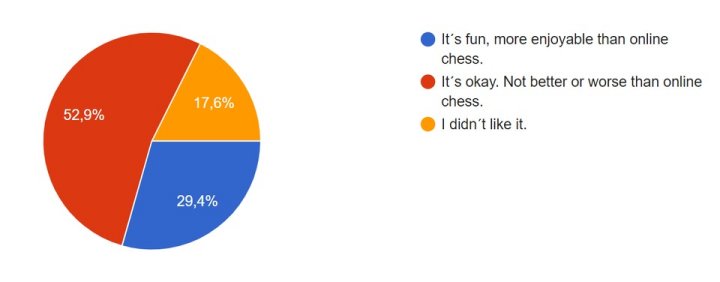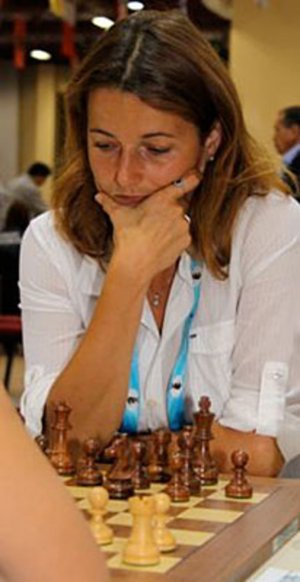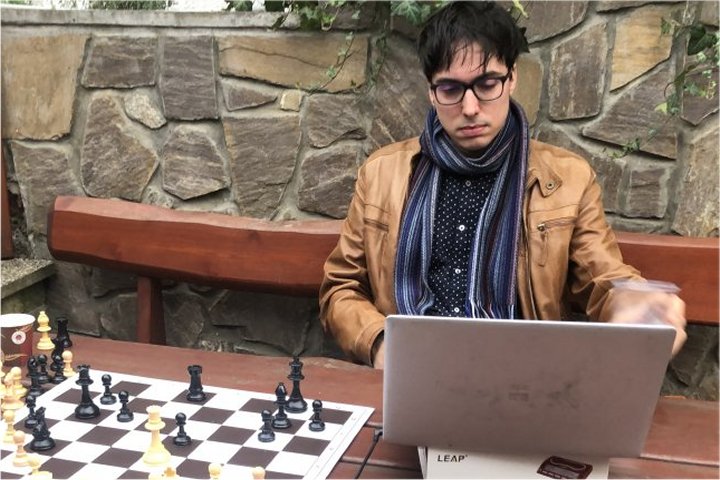Hybrid Chess: Feedback from the players
How did it feel to play hybrid chess? Okay was the most frequent answer on the Mitropacup questionnaire.

When Julia Novkovic realized that her opponent could checkmate her, something even more shocking happened. On the way to delivering checkmate on h7, the screen showed her opponent’s queen stopping a square short on h6. This didn’t only blunder the queen but also a checkmate on her own king. After the game, the Austrian player shared on Facebook her shame to have won in such a way after she had been outplayed fair and square. The least she could do now was to suggest that the game won’t be rated. Novkovic suggested that in a clearer state of mind she would have resigned after realizing that her opponent had mouse-sliped.
More than half of the respondents want mouseslips corrected. Some even say that intervention isn’t only due when a player requests it but as soon as an arbiter observes an obvious input error.
It was the most heart-breaking but not the only result-changing input error that occurred during the Mitropacup, a traditional tournament between ten European nations with a men and a women team each. In one case a rook moved to a square where it could be taken by two enemy pieces, in another a pawn moved ahead instead of capturing a piece. In the biggest hybrid chess event so far with eighty players and twenty arbiters in ten venues, one of its advantages over online chess was given away. It was announced before round one that the moves would have to stand as entered via a computer. Even though in each of the venues two arbiters were present, even the most obvious mouseslips would not be corrected.

Julia Novkovic was ashamed of winning due to a mouseslip. (photo: Novkovic.at)
In a questionnaire provided in English and German by ChessTech and distributed through the team captains, more than half of the so far 25 responding players said that mouseslips should be corrected. Some even say that intervention isn’t only due when a player requests it but as soon as an arbiter observes an obvious input error. Claudia Münstermann, a German arbiter, defended the rule on Twitter saying that the players could choose Tornelo’s confirmation mode option. At the next big hybrid event, the European World Cup qualifier that starts on 24 May with 272 competitors in 35 hybrid venues, confirmation mode will be the default setting.
Whereas in our earlier test events the moves were first made on the board, the regulations prescribe that the players may only reproduce the position on a regular board, which means that they have to enter the move on the computer first. More than half of the responding players think that they should be allowed make their move on a board and then enter the move in the computer. Every second respondent said they had some difficulties to adjust. One player wrote that he felt under pressure due to the strict rules. Some missed the physical presence of their opponent.
The most frequent problem claimed was getting tired from staring at the screen. More than half said that they didn’t always notice the opponent ’s move fast. A blue bar that Tornelo displays during your turn doesn’t seem enough. A soft acoustic signal, or the screen lighting up or blinking after a move have all gotten a similar number of votes as does hearing a clock ticking when it’s one’s turn. One player didn’t notice a draw offer, another observed lag, a third one wasn’t happy with the piece design.

In a recent hybrid match Vienna – Lisbon, the Vienna side (pictured are Peter Sadilek and Christoph Menezes) played their games al fresco. (photo: Stefan Löffler)
Reliable electronic boards are considered by half of the respondents as an optimal set-up. Only two respondents said they prefer to play on the screen.
Asked for an optimal set-up, half of the respondents opted for reliable electronic boards (the majority for this was bigger in an earlier survey after the First Hybrid Cities Cup) and nearly as many for the cost-saving combination of board and computer. Only two respondents said they prefer to play the whole game on the screen.
What about the level of their play in what for most participants was their first hybrid event? While nearly half said it was a bit below their usual, a quarter of the respondents felt that they played a bit better. A slight majority of the respondents considers hybrid as suitable during the pandemic but would always prefer otb chess. Some players consider hybrid sensible for team matches. Roughly a quarter of the players would play hybrid chess under any circumstances.
What advise would they give to others? Try it out before you compete! Get used to Tornelo! Watch your time, as you will spend more than usual! A typical verdict read "currently we have to play this way, but never more after the pandemic" or "we missed playing chess, and this is the best alternative we have now."
This article first appeared on Chess Tech. Republished with kind permission.
Links


























